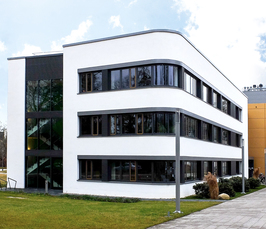Coupling phase-stable single-cycle terahertz (THz) pulses to scanning tunneling microscope (STM) junctions enables spatio-temporal imaging with femtosecond temporal and Ångstrom spatial resolution. The time resolution achieved in such THz-gated STM is ultimately limited by the sub-cycle temporal variation of the tip-enhanced THz field acting as an ultrafast voltage pulse, and hence by the ability to feed high-frequency, broadband THz pulses into the junction. In this talk, I will present our results on the coupling of ultrabroadband (1-30 THz) single-cycle THz pulses from a spintronic THz emitter (STE) into a metallic STM junction. We demonstrate broadband phase resolved detection of the tip-enhanced THz waveform via THz-field-induced modulation of ultrafast photocurrents across the junction. Comparison to the unperturbed far-field THz waveform reveals the antenna response of the STM tip. Despite tip-induced low-pass filtering, frequencies up to 15 THz can be detected in the enhanced near-field, resulting in THz transients with a half-cycle period of 115 fs. Moreover, versatile phase and polarity control of the THz waveform can be achieved via the STE excitation conditions and magnetization, and few Volts THz bias at 1 MHz repetition rate can be reached in the current setup. Finally, we find a nearly constant THz voltage and waveform over a wide range of tip-sample distances, which by comparison to numerical simulations confirms the quasi-static nature of the THz pulses. Our results demonstrate the suitability of spintronic THz emitters for ultrafast THz-STM and provide insight into the femtosecond response of defined nanoscale junctions.
[more]

